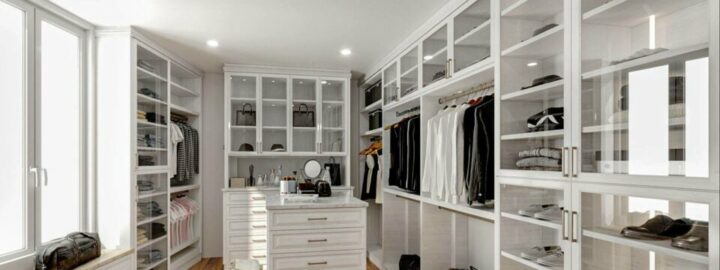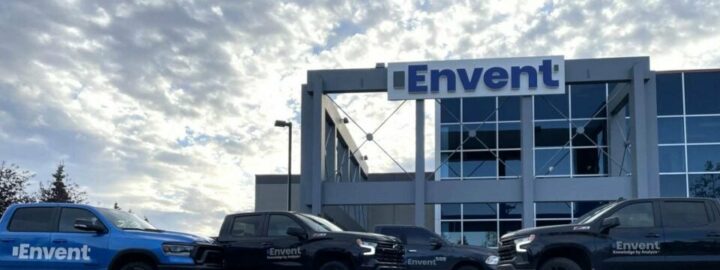Business process reengineering (BPR) and enterprise resource planning (ERP) implementation go hand-in-hand, but should BPR and an ERP implementation be done separately or concurrently? Sean Chatterjee, Acumatica’s Senior Vice President, Americas, has the answer.

According to TechTarget, “[a] business process is an activity or set of activities that accomplish a specific organizational goal. Business processes should have purposeful goals, be as specific as possible, and produce consistent outcomes.” It’s a deceptively straightforward concept, especially in the wake of the pandemic, which dramatically changed how the world does business.
Before the pandemic, companies showed interest in Business Process Reengineering (BPR), through which they redesigned their operations to optimize business tasks, promote productivity and profitability, and improve operational costs and customer service. But BPR has taken on new significance in today’s constantly evolving marketplace, where purposeful goals, agile processes, and consistent business outcomes are the keys to success.
What is Business Process Reengineering (BPR) and how does it work?
Business Process Reengineering (BPR) is the process of optimizing business processes to improve operational costs and customer service.
BPR is a step-by-step strategy that includes reviewing existing processes, incorporating team members’ input, and implementing modern technology—such as an enterprise resource planning (ERP) solution. Taking BPR steps and implementing the right ERP solution can improve efficiency, increase productivity, and, ultimately, boost profitability.
Businesses ready to take advantage of these benefits have a decision to make: Should they start BPR and implement the ERP solution separately or concurrently? There are pros and cons to each method, but, before making a choice, businesses should first understand the three phases and four major areas of BPR.
What Are the 3 Phases of BPR?
- Planning
In the Planning Phase, leaders identify the scope and goals of the reengineering initiative. They’ll begin mapping and analyzing current business processes while identifying problems and areas for improvement. The Planning Phase also involves developing a detailed implementation plan that includes resource allocation, timelines, approval processes, etc.
- Design
The Design Phase involves redesigning the evaluated processes to eliminate non-value-added activities, optimize workflows, and leverage technology. During this phase, businesses will need to develop a prototype of the new processes and test it with a small group of users.
- Implementation
Once the prototype has been tested and approved, the redesigned processes can be implemented. The Implementation Phase includes comprehensive training and clear communication across the organization. It also involves monitoring the performance of the newly designed processes to ensure they add value in terms of operational success and customer satisfaction.
What Are the 4 Major Areas of BPR?
BPR affects the entire business, from the top down. Executives initiating it must consider the following four major areas:
- Organization: How is the business structured, and what are the roles and responsibilities of each team member?
- Technology: Which technology will automate tasks, improve communication, and provide better access to information? (Hint: A sophisticated ERP solution does all this and more.)
- Strategy: Is the BPR aligned with the company’s overall strategy?
- People: Because BPR can have a major impact on employees, are business leaders able to clearly communicate the changes and encourage employee buy-in? (Hint: This should include highlighting how BPR offers the opportunity for employees to learn new skills and be empowered to take on more responsibility.)
ERP Implementation, Business Process Reengineering: Separate or Together?
Now it’s time to determine if BPR and an ERP implementation should occur separately or together. Let’s first explore what happens when these critical processes are handled one at a time.
Starting with BPR ensures that business processes are optimized before any new software is configured. It also helps companies determine what features their ultimate ERP choice should have and which are unnecessary. BPR provides process documentation that can help the ERP implementation run smoothly, give employees a clearer, fuller understanding of all business processes, and make it easier for employees to learn the system after it has gone live.
An Enterprise Resource Planning (ERP) implementation also requires reviewing and adjusting business processes in order to properly install and configure the software. While this is not the equivalent of BPR, it can improve processes more efficiently, more cost effectively, and with less prolonged disruption of personnel.
Doing BPR independently of an ERP implementation can help businesses identify software modifications that make “the software fit the process.” But heavily modifying a tightly integrated ERP system can complicate upgrades to future releases and diminish the useful life and ROI of the overall ERP investment.
So, what happens when businesses perform BPR in conjunction with an ERP implementation?
Combining the processes is more cost effective and leads to better results. Most ERP systems incorporate “best practices” and may offer process alternatives that would have been missed in the BPR exercise alone. The ERP consultants employed to implement the software can also provide process and industry expertise that would not be available during a separately performed BPR exercise. And, when BPR and an ERP implementation happen together, customizations can be created in the moment, so the software and the business processes will perfectly sync for years to come.
ERP Implementation and BPR: Together is Better
Whether businesses do BPR first or concurrently with an ERP implementation, the restructuring process will benefit them. However, including BPR as an integral part of an ERP implementation brings together more expertise and valuable alternatives, which can yield better results.
To learn more, contact our team today. We’ll answer any questions about our cloud ERP software and about how to ensure a successful ERP implementation.
 Canada (English)
Canada (English)
 Colombia
Colombia
 Caribbean and Puerto Rico
Caribbean and Puerto Rico
 Ecuador
Ecuador
 India
India
 Indonesia
Indonesia
 Ireland
Ireland
 Malaysia
Malaysia
 Mexico
Mexico
 Panama
Panama
 Peru
Peru
 Philippines
Philippines
 Singapore
Singapore
 South Africa
South Africa
 Sri Lanka
Sri Lanka
 Thailand
Thailand
 United Kingdom
United Kingdom
 United States
United States













